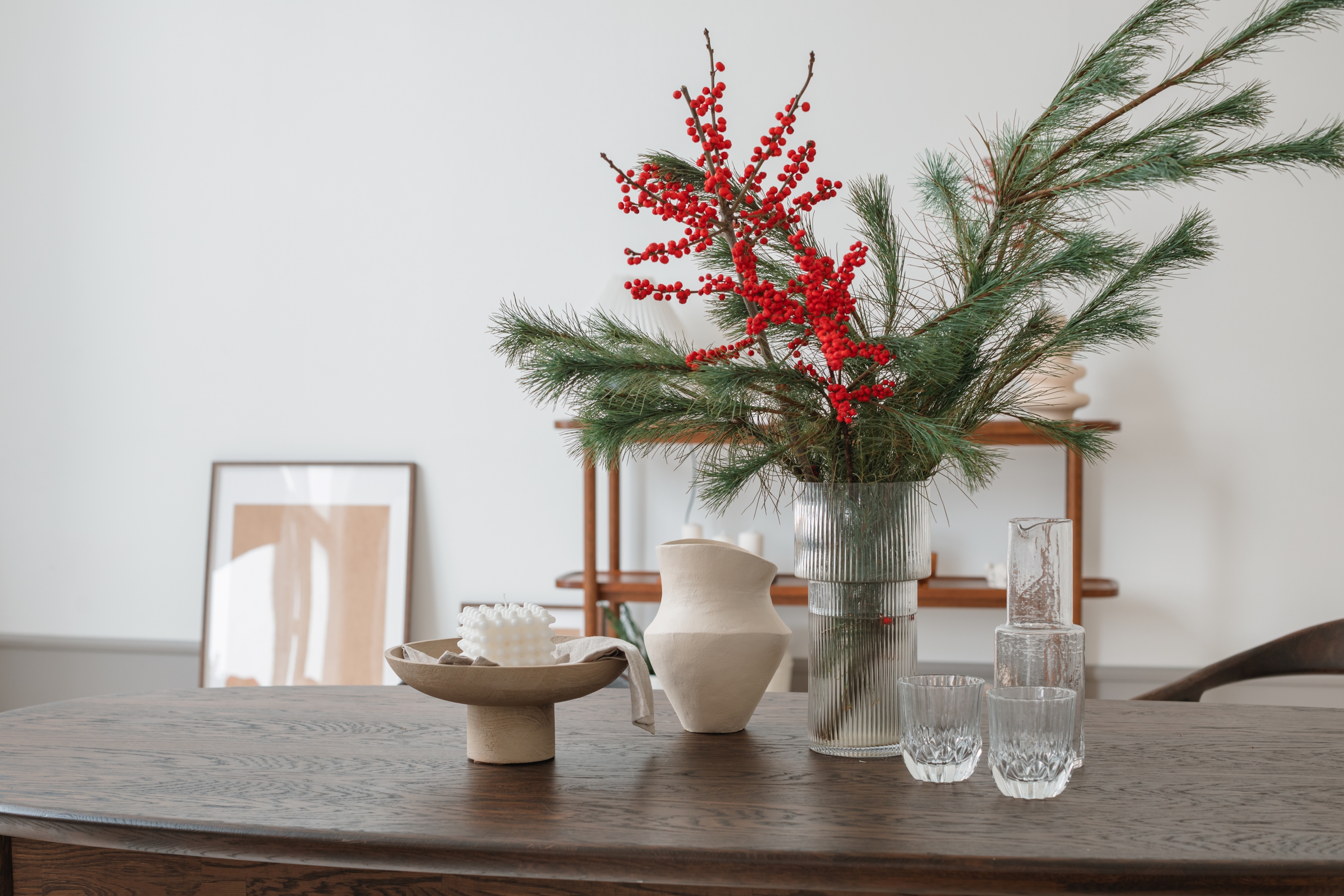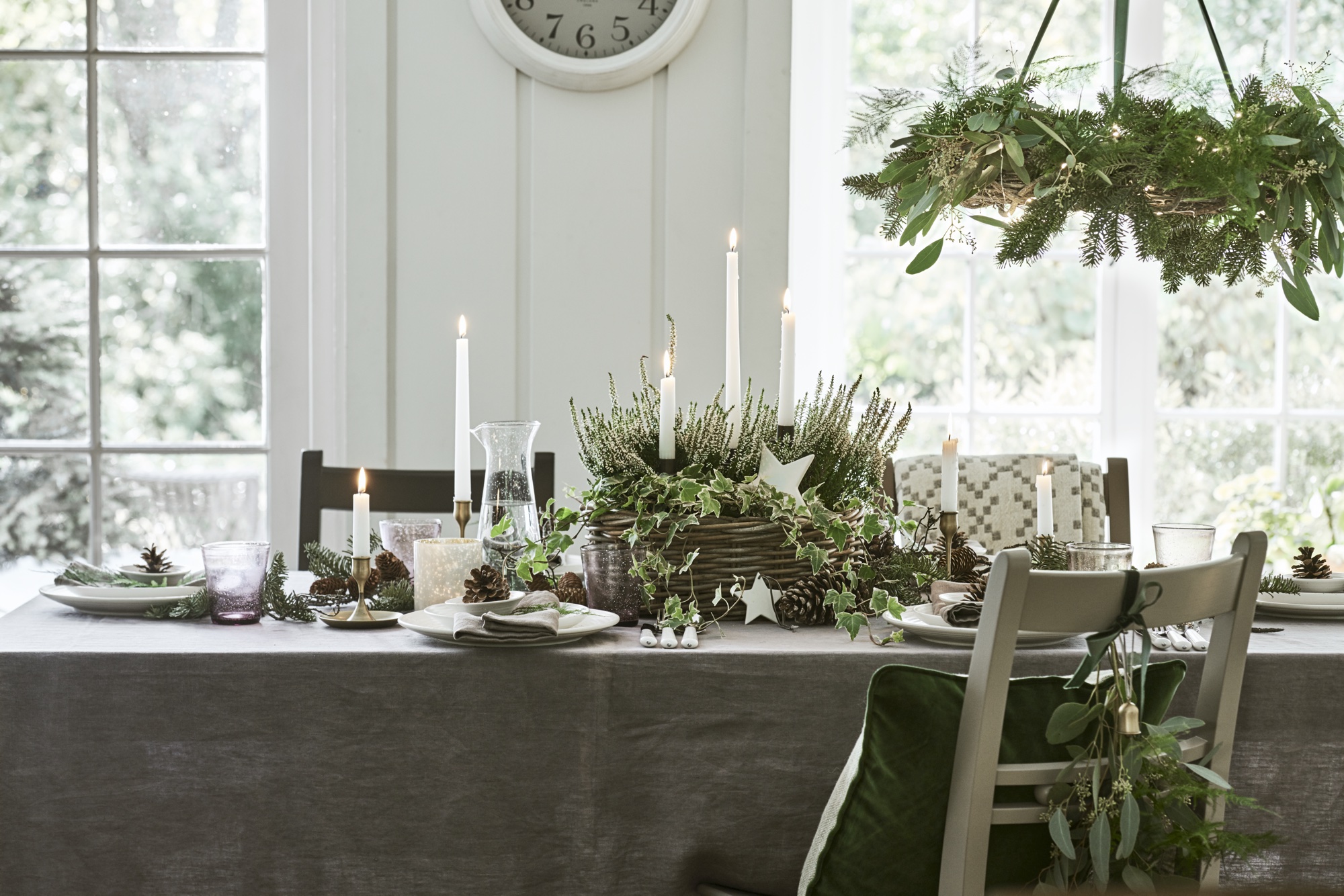
You might think that beautiful floral displays are reserved for spring and summer, but you would be mistaken. The best florists curate stunning arrangements all year round, including the depths of winter.
Fresh flowers are a wonderful addition to any modern living room, for their aesthetic and natural aroma. In Summer it's simple, bright plush blooms do all the talking, but in winter you have to work a little harder. During winter it's not easy to know what to include and how to achieve a striking display with limited flowers. However, it can be done.
We spoke to some professional florists to get their top 5 tips for arranging a winter bouquet that rivals their summer counterparts. Take a look at these guidelines to upgrade your floral displays this season.
1. Ratio

In winter, supplement your bouquet with foliage for a fuller look. According to florists, there is a ratio to follow when in comes to flowers and foliage to achieve the perfect bunch.
'To maintain a balanced foliage-to-flower ratio for an elegant look aim for approximately 2:1,' says floristry enthusiast, David Cohen from florist Badais International. 'This allows the foliage to frame and accentuate the blooms without overpowering them,' he explains. But experiment with different ratios to find the perfect look for your space. This will differ depending on if the flowers are part of a dining table centerpiece or for a mantle piece.
2. Texture

One thing that is paramount in a winter bouquet is embracing texture. 'Playing with the colors and textures of stems (and using seasonal stems) will help to capture the essence of winter,' says Jo Reason, creative director at online florist Bloom&Wild. 'To do this add in abundant foliage, woody branches and twigs, aromatic scents and winter berries,' she explains. 'Stems that are currently in season include pine, pussy willow and wax flower.'
To really amp up the texture try adding personalized touches like seasonal berries and pinecones. The key to creating a visually appealing seasonal arrangement is to evoke the charm and coziness of winter. View it as part of your Christmas decorating.
3. Color Scheme

In summer the more colorful the better, however in winter you're more limited in what's available in this season. Sticking to a strict color scheme will make the arrangement look more intentional and designed, as well as in keeping with our winter theme.
'I would recommend embracing classic winter color schemes with a mix of deep reds, greens, and whites,' says David. 'Poinsettias, red roses, and white lilies complemented by rich greenery create a timeless winter palette,' he explains. This will look beautiful, and not like you were restricted for choice. Lilies are also a fabulous way to scent your home naturally.
4. Have a focal point

Every bouquet should have a focal point according to florists, but it is especially essential in winter arrangements. After you have chosen a color scheme pick the feature that will be the central element, says flower expert & florist Igor Podyablonskiy. 'Keep the brightest-colored flowers central to the display to provide a focal point,' says Igor. You can even spray foliage gold and silver to provide contrast and glamour, he suggests.
The guidelines will help you to achieve a gorgeous winter bouquet to rival the summer blooms. Come spring you will mist the festive arrangments.







